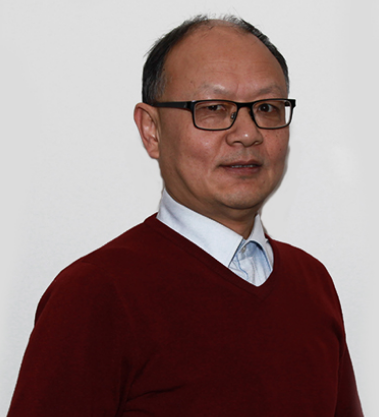| Biography | |
|---|---|
 Prof. Quanshun Luo Sheffield Hallam University, UK |
|
| Title: A short-term austempering process for ultrahigh-strength and wear-resistant steels | |
| Abstract: Ultrahigh strength steels and wear resistant steels are both highly demanded in modern industry. This presentation reports a new short-term and low-temperature austempering treatment to strengthen bainitic/martensitic steels 56NiCrMoV7 and 300M. Hardness, sliding wear and abrasive wear, tensile tests as well as V-notch Charpy impact tests were employed. The samples were characterised using OPM, FEG-SEM, TEM. A self-developed quantitative XRD analysis was applied to study the carbon partitioning behaviour. A 5-20 minute short-time austempering at an isothermal temperature close to or below the Ms point resulted in refined arrays of initial nano-bainitic ferrite laths and inter-lath filmy austenite, while subsequent quenching resulted in the majority martensite and retained austenite. When the austempering time was increased, progressive decrease of the hardness was associated with microstructure evolution featured by bainitic ferrite coarsening and carbide precipitating. The austempered 56NiCrMoV7 obtained ultrahigh tensile strength (~2,100 MPa) and yielding strength (~1,800 MPa) along with good ductility and toughness, suitable for torsion bars of large vehicles. For the 300M, reciprocating sliding wear tests against a WC/Co ball revealed a decreased wear coefficient by 41% from 2.67 to 1.58 10-15 m3N-1m-1. In two-body abrasive wear tests on a SiC abrasive disc, the austempered samples exhibited wear coefficients lower than the quenched martensitic sample by up to 50%. The sliding wear was dominated by severe shear deformation, which resulted in a nano-laminate structured top layer. Both micro-cutting and ploughing deformation dominated the abrasive wear, including the formation of a nano-laminate top layer and bending deformation in the subsurface zone. In both cases, the improved wear resistance was attributed to the stabilisation of retained austenite induced by carbon partitioning. | |
| Biography: Dr Luo is a member of the core consultancy team working within the Materials and Engineering Research Institute (MERI), having expertise in metallurgy, materials science, surface engineering and tribology. His role includes consultancy, research, and supervising research students. Dr Luo joined the consultancy team in 2007, and has delivered several hundreds of consultancy jobs, with experiences in the following areas characterisation of metallic alloys and ceramics, thin films and coatings, and chemical powders using SEM, TEM, XRD, EDX, and micro/macro hardness measurement of residual stresses of hard coatings and shot-peened surfaces by XRD investigation of engineering materials failures, including fatigue and fracture, metallurgical defects, wear and friction, and corrosion wear and friction properties of metals and ceramics using pin-on-disk tribometer, including high-temperature sliding wear | |
